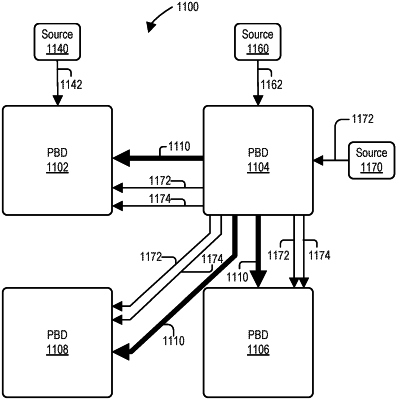| CPC G06F 3/165 (2013.01) | 20 Claims |

|
1. A first playback device comprising:
one or more processors;
a first communications interface;
a second communications interface; and
tangible, non-transitory, computer-readable media comprising program instructions executable by the one or more processors such that the first playback device is configured to:
play first audio content received via the first communications interface in a groupwise manner with at least a second playback device based on (i) first playback timing information associated with the first audio content, wherein the first playback timing information is received via the first communications interface, and (ii) a relationship between first clock information of the first playback device and second clock information of the second playback device;
while the first playback device is playing the first audio content in the groupwise manner with the second playback device, (i) generate second playback timing associated with second audio content received via the second communications interface, wherein the second playback timing is based on a relationship between the first clock information of the first playback device and the second clock information of the second playback device, and (ii) transmit the second audio content and the second playback timing associated with the second audio content to the second playback device via the first communications interface; and
play the second audio content in a groupwise manner with the second playback device based on (i) the second playback timing information and (ii) the first clock information of the first playback device.
|